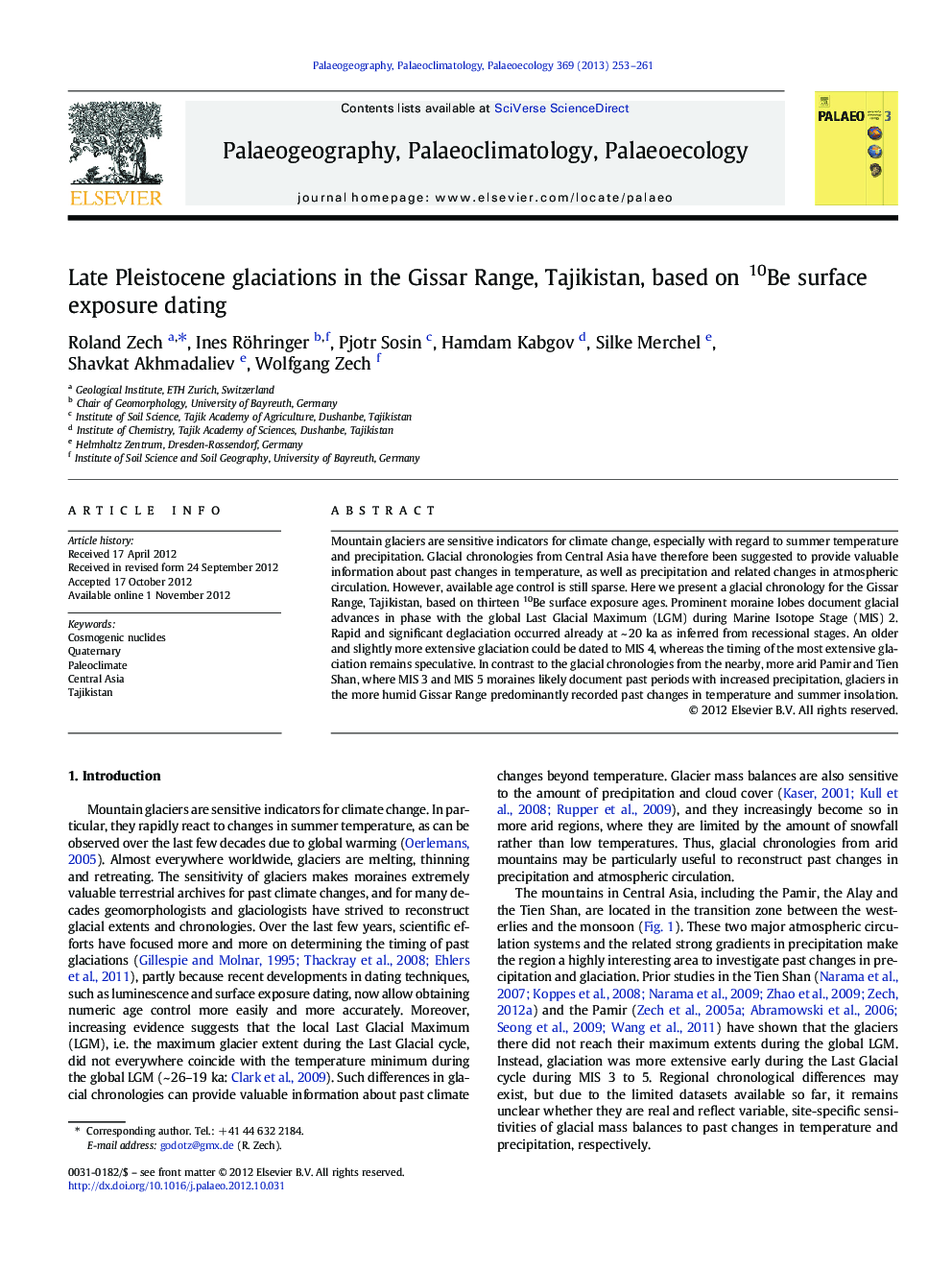| Article ID | Journal | Published Year | Pages | File Type |
|---|---|---|---|---|
| 4466698 | Palaeogeography, Palaeoclimatology, Palaeoecology | 2013 | 9 Pages |
Mountain glaciers are sensitive indicators for climate change, especially with regard to summer temperature and precipitation. Glacial chronologies from Central Asia have therefore been suggested to provide valuable information about past changes in temperature, as well as precipitation and related changes in atmospheric circulation. However, available age control is still sparse. Here we present a glacial chronology for the Gissar Range, Tajikistan, based on thirteen 10Be surface exposure ages. Prominent moraine lobes document glacial advances in phase with the global Last Glacial Maximum (LGM) during Marine Isotope Stage (MIS) 2. Rapid and significant deglaciation occurred already at ~ 20 ka as inferred from recessional stages. An older and slightly more extensive glaciation could be dated to MIS 4, whereas the timing of the most extensive glaciation remains speculative. In contrast to the glacial chronologies from the nearby, more arid Pamir and Tien Shan, where MIS 3 and MIS 5 moraines likely document past periods with increased precipitation, glaciers in the more humid Gissar Range predominantly recorded past changes in temperature and summer insolation.
► Glacial advances in the Gissar Range occurred during MIS 2 and 4. ► Glaciations predominantly recorded past temperature changes and summer insolation. ► No MIS 3 (and MIS 5?) glaciations as in the more arid Tien Shan and Pamir. ► Rapid and significant deglaciation began already at ~ 20 ka. ► Older and more extensive glaciations remain undated.
